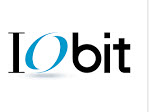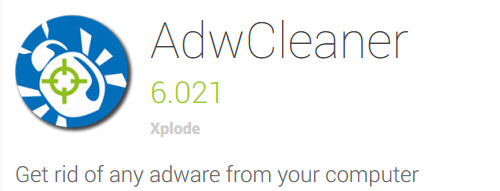Software for Guitarists
Software for Guitarists
help you learn licks and riffs.
Keep your computer safe.
Solutions to hard to solve problems
The best thing that ever happened to the Guitarist is the computer and software that can be used to enhance your experience.
Most young players rely on tabs these days but tabs are not always correct.
In the old days, we would manually pick up the turntable needle and put it back down over and over to try to figure parts out. Older turntables had an extra speed, 16 rpm. This was a speed that never really caught on but for aspiring musicians, it was a Godsend. This was approximately half the speed of the popular 33 1/3 speed of LP records. This way we could slow down the lick and keep it in the same key. Slowing down a 45 RPM record to 33 RPM caused a key change.
Turntable
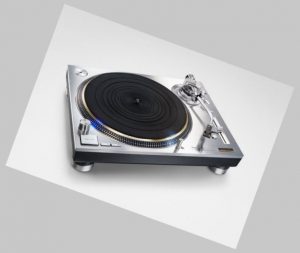
Today there are several software packages that do magic that we old-timers only dreamed about.
PaceMaker Plug-in
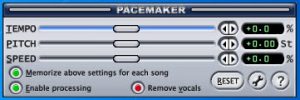
Pacemaker plug-in
One that I have used for several years is “The PaceMaker Plug-in“. This is an add-on for WinAmp. Pacemaker gives you control of “Tempo” “Pitch” and “Speed” The Tempo control allows you to slow down playback without affecting the key so you stay tuned to the song.
The Pitch allows you to change the key up or down in increments of 0.01. I use this a lot with old Beatle tunes that are slightly off the standard pitch ( A=440 Hz). This does not affect the speed of playback. This can also be used by a vocalist to find a better key more suited to their vocal range. In a recent analysis, I found that certain old Beatles songs were recorded or at least mastered so that they are in A =432Hz. The funny thing is that not all the songs are in A=432Hz on the first 2 LPs. Some are in A=440Hz. Now when you research A=432Hz you open up a whole can of worms and hocus pocus. Even some of the latter tunes on Help are in A=432Hz. Here’s an update. Using a plugin from Zplane named Tonic I was able to confirm that the Beatles were tuned to A=432Hz on several recordings.
Speed control is something that I find that I use less. It will speed up or slow down but it will affect pitch. It could be used to correct old recordings.
One major drawback is that you cannot save the changes directly. One workaround is to use the free Audacity software. It can be set to record “what you hear”. If you have Windows 7 this feature might be turned off. There is a way to activate it. Do a Google search for “Stereo Mix“. With this, you can record anything that is heard through your computer’s sound system. I recently had to reinstall all my apps after a hard drive failure. You don’t always know what is missing until you need it. I no longer had “Stereo-Mix”. I when to my motherboard manufacturer’s website and downloaded the audio drivers. They were older than the ones I had installed. Now I have the “Stereo Mix” option that I set as default. At first, it didn’t work. Then I discovered that I had another audio driver installed. So make sure you have only one driver installed.
There are a few others, including some YouTube tutorials.
By using “Stereo Mix” you can record anything that your computer hears.
Audacity is free and an amazing package. It also converts. Wav to Mp3 allows you to edit, create multi-track recording etc. It can be used to open and create Mogg files. Mogg files are multitrack audio files that can be found on the web. For instance, you can monitor every track individually of some famous songs. You can also make your own Mogg files. Audacity has the ability to save multi-track files as .ogg files. You just have to rename them .mogg files.
RiffMaster Pro
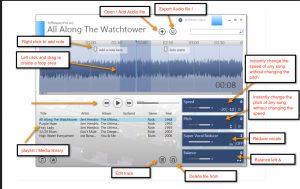
Another software package that I have tried is “RiffMaster Pro” The big advantage is that the software will remember your settings. With Riffmaster Pro you can highlight a section of the song and play it over and over. At the same time, you can slow it down. This is great for learning licks. The Speed control does the same as Pacemaker’s tempo control.
It also has a feature to remove vocals. This will only work on a stereo recording. What this actually does is combine the left and right channels and by using phase reversal it eliminates and vocals or instruments that are panned to the center. So you may lose more than just vocals. Check out the demo video It seems that this software is no longer available. You can still find a trial version available.
Riff Station
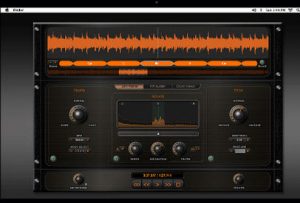
Then there is “Riff Station”. This is the most sophisticated of the lot. It has a feature that calculates and displays the chords. It is not perfect, so be forewarned. You can also zero into specific instruments or voices. It takes a bit of practice but you can really isolate instruments and voices and hear parts that you never could before. I have used it to create isolated guitar and vocals from stereo recordings. It also has Pitch and Tempo controls. There a chord viewer that will show the basic chord formations. There is a metronome that can produce a click track. It has many more features. Try the demo or check out the demos on YouTube.
With these packages, you can slow the speed (tempo) without affecting the Key (pitch). You can change the pitch without affecting the speed. This is great for picking out Hendrix licks. He tuned most often in Eb but also in D. So without having to re-tune your guitar, you can change the pitch of the recordings. Stevie Ray Vaughn, Eddie Van Halen and others tuned in Eb. Robin Trower seems to like D these days. So these tools will help. Riffstation is now free but may not be available for very long.
VLC media player

With the availability of countless video tutorials available on YouTube, I thought it would be nice to have the same above features for video. I found that I already had a free package that will slow down a video without affecting the pitch. It is VLC
media player. When you download a guitar tutorial from the WEB it sometimes still isn’t clear enough. I am visual so seeing something played will be retained in my brain. With VLC you can almost slow down the video to see each note played. VLC can also be used to convert MP4 files to MP3. So if you have a music video you create an MP3 audio-only file using VLC.
MP3 Gain

MP3 Gain is a very useful free application. I have many MP3s loaded in my various players and computers and it drives me crazy having to adjust the volume levels from recording to recording. With MP3 gain you can boost or lower the volume of your MP3 files. It’s also free.
The best thing that ever happened. Can you see your favourite player anytime you want? If you are like me, I’m visual, if I see someone play it I will tend to remember it and be able to figure out what is going on. On top of that, there are dozens of tutorials on how to play a certain song or solo. Now not all tutorials are accurate but remember I’ve seen some famous guitarists play the same song differently. So look for the guy or gal that seems to sound most like the recording. Remember YouTube is free and you can follow tutorials on blues, rock, jazz etc. For Beatles freaks, there are excellent vocal tutorials. It’s free too. There are packages such as Video Download Helper that allow you to capture the video for further study.
Audacity

I can talk enough about this great and FREE software package. You can do a lot of great tricks with the package. There are tonnes of plugins to add effects. If you can find Mogg files you can listen to multi-track recordings track by track. If you happen to have old sound on sound recordings you can sync the tracks together to recoup some lost generations. You can fiddle with speed too. I had a slew of old recordings that were recorded of a machine that somehow worked between 3.75 and 7.5 IPS. You can increase the volume of tracks. You can also create your own Mogg files. In order to create Mogg files, you have to set up the export preferences. Click on Edit, then Preferences and check Use Custom Mix.
Audacity setting for mogg files
Just export your multi-track audio files as Ogg files then rename them to Mogg files. Audacity will recognize them and open them up. The list goes on. Audacity
PROBLEM with AUDACITY version 3.6.1
I use stem splitting software such as RipX, Demucs,Spleeter , MVSep etc. to extract vocals,bass ,drums and guitars. In the recent past I have been able to save these into .Mogg files (multi-track Ogg files) using Audacity. With Audacity you could open Mogg files and save to Ogg files and then rename to Mogg files. Audacity ver 3.6.1 no longer supports these files. You can save files as multi-track ogg files but you cannot open them. They will open with ver 3.4.3. Older Audacity versions are available to download. Also 3.6.1t will not load vst plugins from others software. There is no mention of this on the Audacity site.
I have seen a similar problem with Handbrake, where an important function no longer exists and there is no explanation. So as a precaution, do not delete older software version when you update. You may have to roll back.
Beware of hijackers
There are many free software packages available on the Internet but one has to be careful when downloading them and installing them. Do not trust a site like CNET to protect you. One way these software are offered is free is that they try to install other software including ones that hijack your browsers and search engines. It can be a real nightmare to get things back to normal afterward.
There are lots of free stuff out there, but be careful. Remember there is no software that will protect you from everything. You need a firewall and an antivirus package minimum. The software packages that I use are highly recommended by experts. Read some computer magazines, They often feature free software and not-so-free software.
Be very vigilant and read every line. Even Oracle’s Java updates try to hijack your browser and search engine. Google is the best, don’t use the rest.
Another package that tries to hijack your home page and browser is SKYPE. Unless you want to use sub-standard products, uncheck “Use Bing and MSN. Google is the best, forget the rest.
Beware of sites like CNET. The software that you want is hidden among all kinds of bad software. Before you download, make sure you are downloading what you came for. Then when you install software choose “custom install” or “advanced” if available. Look for things “decline all offers” and advanced installation. Some packages install crap unless you uncheck these options. Decline all extra offers and free gifts.
Protect yourselves
I have never bought an anti-virus or firewall software. I don’t use pirated ones either. I have used the ZoneAlarm free version for many years. I have also used the free AVG for equally as long. Always use the custom install so that you can avoid installing extra crap. Another one that I use daily is the free CCleaner. Run CCleaner once a week or more. I recently worked on a computer that had no more space left on the hard drive. There was an excess of 380 GB of temp files and other garbage. There was no space left for page files. Paging occurs because the Computer also uses hard drive space for temporary memory. It used to be that you needed 1.5 times the amount of your physical memory, so for 8 GB of RAM, you need 12 GB of free space on your hard drive for paging. Another important software is Malwarebytes. It will search for malware and other spyware. Another package that I use when I suspect I may have something serious is Adwcleaner. It too is free but there are scammers out there who will try to charge you for it. Also, be careful when using it because it may not like certain aspects of Zonelabs or AVG. Remember free does have a cost. AVG and Zonelabs will pop up ads to upgrade to their pro versions. If you want to pay then do so. I never did. I just installed this anti-Ransomware package, Cyberreason’s Ransom Free
Back up your hard drive or a least your files. There are many good free apps to do this. Use an external hard drive, DVD or Blu-ray.
I have also installed several apps from IObit.com. Just heed my words and read every screen. A lot of free software packages offer some questionable additions. If you seem to have no choice then don’t install it. Then again if you think that there is a better search engine than Google it’s up to you. I believe it’s the best. I also use Firefox. Microsoft’s I.E. or “Edge” is pure ……..
( I let you fill in the rest). I may have mentioned this previously. Read British magazines as they are more independent. The American trade magazines are manufacturers prejudiced, pushing products rather than helping the user.
IObit’s defrag program will also shred files (wipe) and clean hard drives. You can set it to run 35 times. The US government recommends 7 times. Remember when you format a drive you are not erasing it. Most files can be recovered. When you delete a file all you do is rename it so that Windows cannot see it. So if you are selling an old drive remember to Shred-it or Wipe it. CCleaner does this. Data can even be lifted from dead drives. So if you want your data to be safe, physically take apart a dead drive and destroy the plates inside. They may nice mirrors.
You can tune a guitar but you can’t tuna fish
Fender
I hope you all have a tuner or some other tuning reference. If you have internet access and need a quick reference try the Fender Online tuner
Audials Beware !!
I just came across this software while trying to use Cakewalk Sonar X2. It corrupted my audio files. I really do not know how it got into my computer but let this be a warning to all. When software is installed and there is no uninstall feature, something is wrong. I had to manually search through the entire registry to delete this menace. So be forewarned. As far as I am concerned this is Malware. If you are not sure how to work in the registry…..don’t.
Dual Screen Monitors
Once you have experienced using dual monitors you may never go back to a single monitor. I live in an apartment building and tenants are constantly leaving older monitors in the recycling area. Maybe you have a friend who has upgraded and is willing to part with a monitor. So this does not have to be expensive. You’ll need two video ports. If you are using a laptop this is usually easy to do. In my setup, I have an on-board video output and I have a better quality video card installed. My main monitor is fed from the add-on video card and my secondary monitor from the onboard one.
Once your hardware is set up, right-click on a blank area of your screen and choose ” screen resolution”
You should see something like this

You may have to click on detect first, You may have to set your BIOS first.
You’ll want to set “Multiple displays” to ” Extend these displays”. This way you can drag windows from one monitor to another monitor. You can have your DAW software on one screen and your lyrics on the other. You can drag monitors 1 and 2 around. You can set whichever one is your main monitor.
I suggest you Google “Multiple Displays” for more in-depth instructions.
Pro Tools First
I was recently asked a question about how to get Protools First to continue on from the place you paused instead of going back to the spot where you started your playback. This wasn’t easy to find. The answer is simple. Click on Options from the main menu and select “ insertion follows playback” (Whatever that means) Now playback will continue from the spot you paused.
Pro Tools First
Major issues with AVG and




